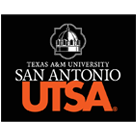Bridging Dual-Language Immersion and Heritage Language Acquisition Research
Abstract
Dual-language immersion (DLI) is becoming prominent as a method for educating diverse learners. Studies in bilingual education have often focused on content learning, but the role of children’s acquisition of their heritage language (HL) has gone understudied. For linguists, DLI schools provide a unique forum in which to answer key questions about HL development. Such research also has critical implications for establishing a parallel agenda in applied linguistics concerning the best pedagogies for teaching Spanish as a HL across the content areas. This presentation concentrates on each of these areas and proposes opportunities for future projects, with a particular focus on Spanish heritage speakers.
There are three key areas in HL research to which DLI schools can contribute. Firstly, they facilitate the comparison of language acquisition under different input conditions (e.g., 50% of instruction in Spanish versus 90%), which could constitute novel evidence for Putnam and Sánchez’s (2013) framework that emphasizes quantity of input. Secondly, they provide access to an age group of children that has been scarce in research (Montrul, 2018), as understanding the path of language development across these years is necessary to distinguish between incomplete acquisition and attrition (Montrul, 2013). Finally, studies on DLI programs have shown that quantity of output affects command of HL structures (Goldin, 2021; Sánchez et al., 2023), which highlights that input is a necessary but insufficient condition in HL development.
In parallel, these data have important implications for applied linguistics. For instance, exploring the role of quantity of input in DLI has important policy implications for how much instruction is necessary to maximize HL development. Secondly, data concerning language development in DLI schools sets the stage for researching the best form-focused pedagogies for teaching the HL to immersion students. Possible pedagogies discussed in the presentation include Processing Instruction (VanPatten, 2015) or bridging (Urow & Beeman, 2013).
Bridging Dual-Language Immersion and Heritage Language Acquisition Research
Dual-language immersion (DLI) is becoming prominent as a method for educating diverse learners. Studies in bilingual education have often focused on content learning, but the role of children’s acquisition of their heritage language (HL) has gone understudied. For linguists, DLI schools provide a unique forum in which to answer key questions about HL development. Such research also has critical implications for establishing a parallel agenda in applied linguistics concerning the best pedagogies for teaching Spanish as a HL across the content areas. This presentation concentrates on each of these areas and proposes opportunities for future projects, with a particular focus on Spanish heritage speakers.
There are three key areas in HL research to which DLI schools can contribute. Firstly, they facilitate the comparison of language acquisition under different input conditions (e.g., 50% of instruction in Spanish versus 90%), which could constitute novel evidence for Putnam and Sánchez’s (2013) framework that emphasizes quantity of input. Secondly, they provide access to an age group of children that has been scarce in research (Montrul, 2018), as understanding the path of language development across these years is necessary to distinguish between incomplete acquisition and attrition (Montrul, 2013). Finally, studies on DLI programs have shown that quantity of output affects command of HL structures (Goldin, 2021; Sánchez et al., 2023), which highlights that input is a necessary but insufficient condition in HL development.
In parallel, these data have important implications for applied linguistics. For instance, exploring the role of quantity of input in DLI has important policy implications for how much instruction is necessary to maximize HL development. Secondly, data concerning language development in DLI schools sets the stage for researching the best form-focused pedagogies for teaching the HL to immersion students. Possible pedagogies discussed in the presentation include Processing Instruction (VanPatten, 2015) or bridging (Urow & Beeman, 2013).

